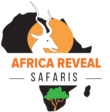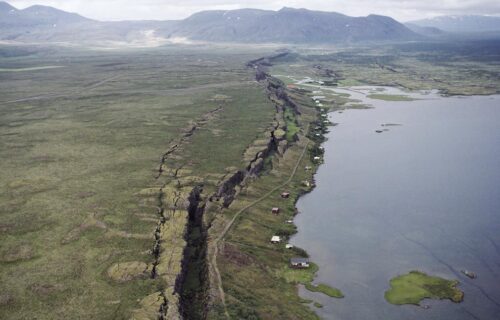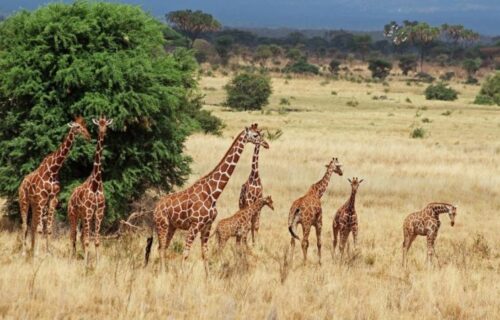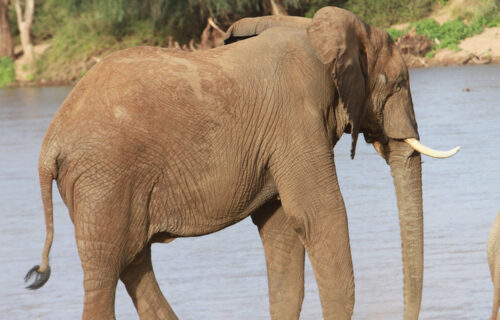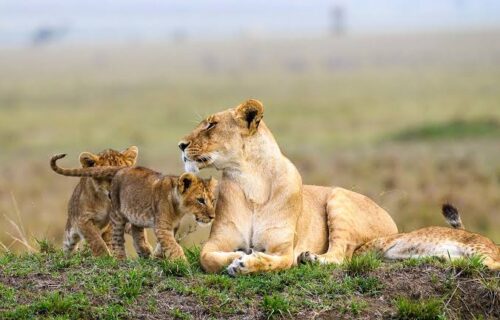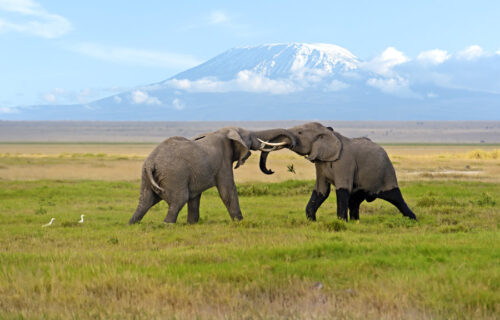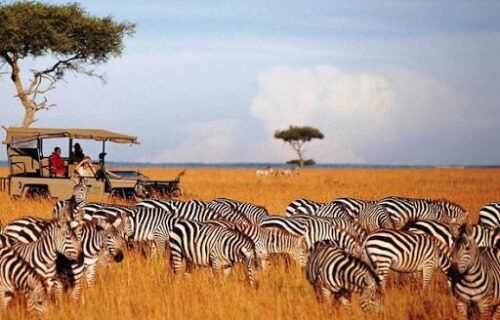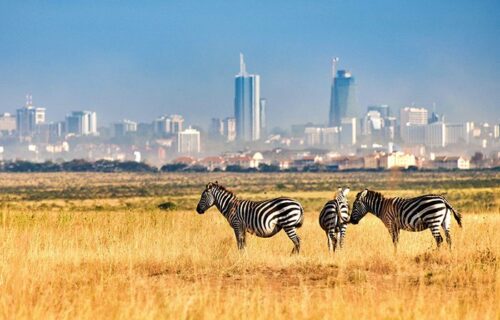Nairobi National Park: The World’s Wildlife Capital
Located just 16km from Nairobi’s city center, Nairobi National Park is a unique and fascinating destination that offers a chance to see wildlife in their natural habitat. The Park is situated on the southern outskirts of the city and is often referred to as the world’s wildlife capital due to its proximity to the bustling metropolis. This proximity makes Nairobi National Park an ideal destination for those who want to experience the thrill of a safari without having to travel far from the comforts of urban life.
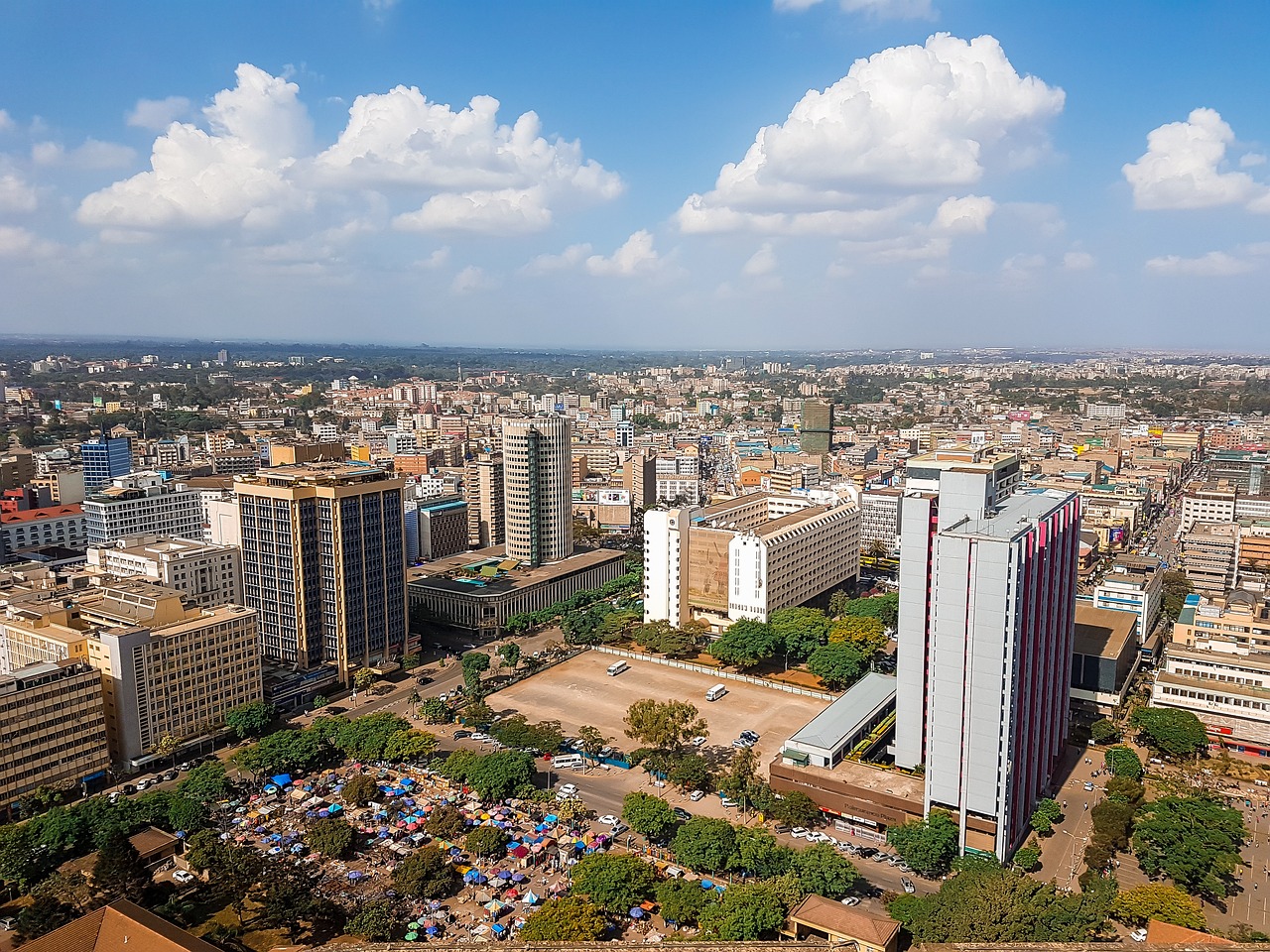 Park Overview
Park Overview
Nairobi National Park was established in 1946 as Kenya’s first national park, and it has been a popular destination for wildlife enthusiasts and tourists ever since. The Park covers an area of 117.21 square kilometers (45.26 sq. mi), making it one of the smaller national parks in Kenya. However, despite its relatively small size, the park is home to a wide range of wildlife and offers a unique and unforgettable safari experience.
The Park is fenced on three sides, with the southern boundary open to allow migratory wildlife to move between the park and the adjacent Kitengela plains. This open boundary allows for the free movement of wildlife and helps to maintain the park’s natural ecosystem. The park’s altitude ranges from 1,533 to 1,760 m (5,030 to 5,774 ft), making it an ideal destination for those who want to experience the beauty of the African savannah without having to travel to more remote areas.
Key Facts
– Established in 1946 as Kenya’s first national park
– Covers an area of 117.21 square kilometers (45.26 sq. mi)
– Fenced on three sides, with the southern boundary open to allow migratory wildlife to move between the park and the adjacent Kitengela plains
– Altitude ranges from 1,533 to 1,760 m (5,030 to 5,774 ft)
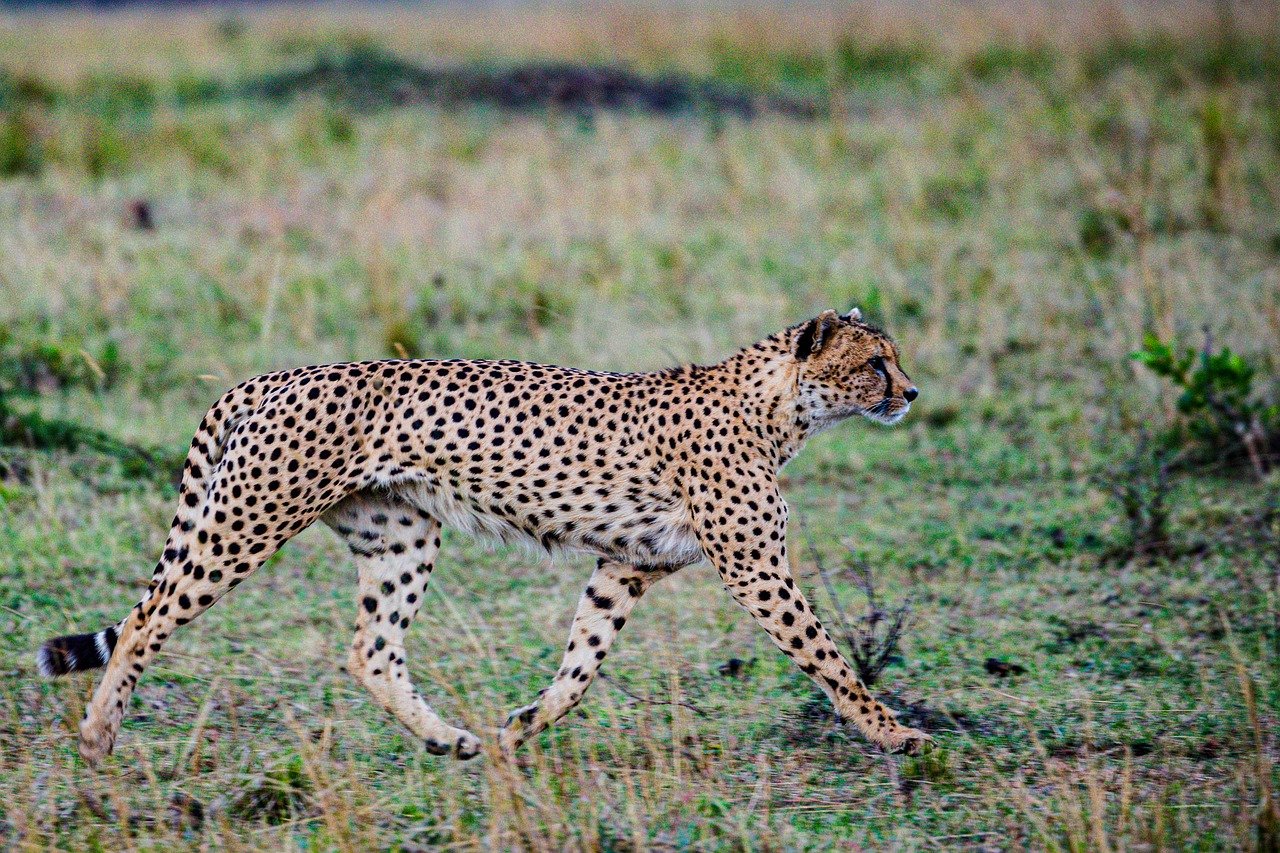 Wildlife in the Park
Wildlife in the Park
Nairobi National Park is home to over 100 mammal species, including four of the Big Five (lion, buffalo, leopard, and rhino). The park’s diverse wildlife population includes endangered black rhinos, African buffalo, eastern black rhinoceros, baboons, gazelle, and many more. Large predators like lions, leopards, hyenas, and cheetahs can be seen in the park, and the park’s grasslands and woodlands provide a habitat for a wide range of antelopes and other herbivores.
One of the park’s most spectacular attractions is the wildebeest and zebra migration, which takes place during July and August. During this time, thousands of wildebeest and zebras migrate through the park, creating a breathtaking spectacle that is not to be missed.
– Large animals like giraffe, zebra, wildebeest, and cheetah, which roam freely in the park’s grasslands and woodlands
– Over 400 species of permanent and migratory birds, including eagles, vultures, and ostriches
– Black rhinos, lions, and cheetahs, which can be spotted in their natural habitats
– A variety of antelopes, including impalas, gazelles, and elands
– Hippopotamuses, which can be seen in the park’s rivers and lakes
 Birdlife in the Park
Birdlife in the Park
Nairobi National Park is also a birdwatcher’s paradise, with over 500 permanent and migratory bird species recorded in the park. The park’s dams have created a man-made habitat for birds and aquatic species, and the park’s grasslands and woodlands provide a habitat for a wide range of bird species.
Some of the bird species that can be spotted in the park include the restricted range Jackson’s widowbird, ostriches, secretary birds, and bustards. The park’s birdlife is also an important part of its ecosystem, and the park’s bird species play a vital role in maintaining the park’s natural balance.
– Over 500 permanent and migratory bird species
– Dams have created a man-made habitat for birds and aquatic species
– Restricted range Jackson’s widowbird, ostriches, secretary birds, and bustards are some of the bird species that can be spotted
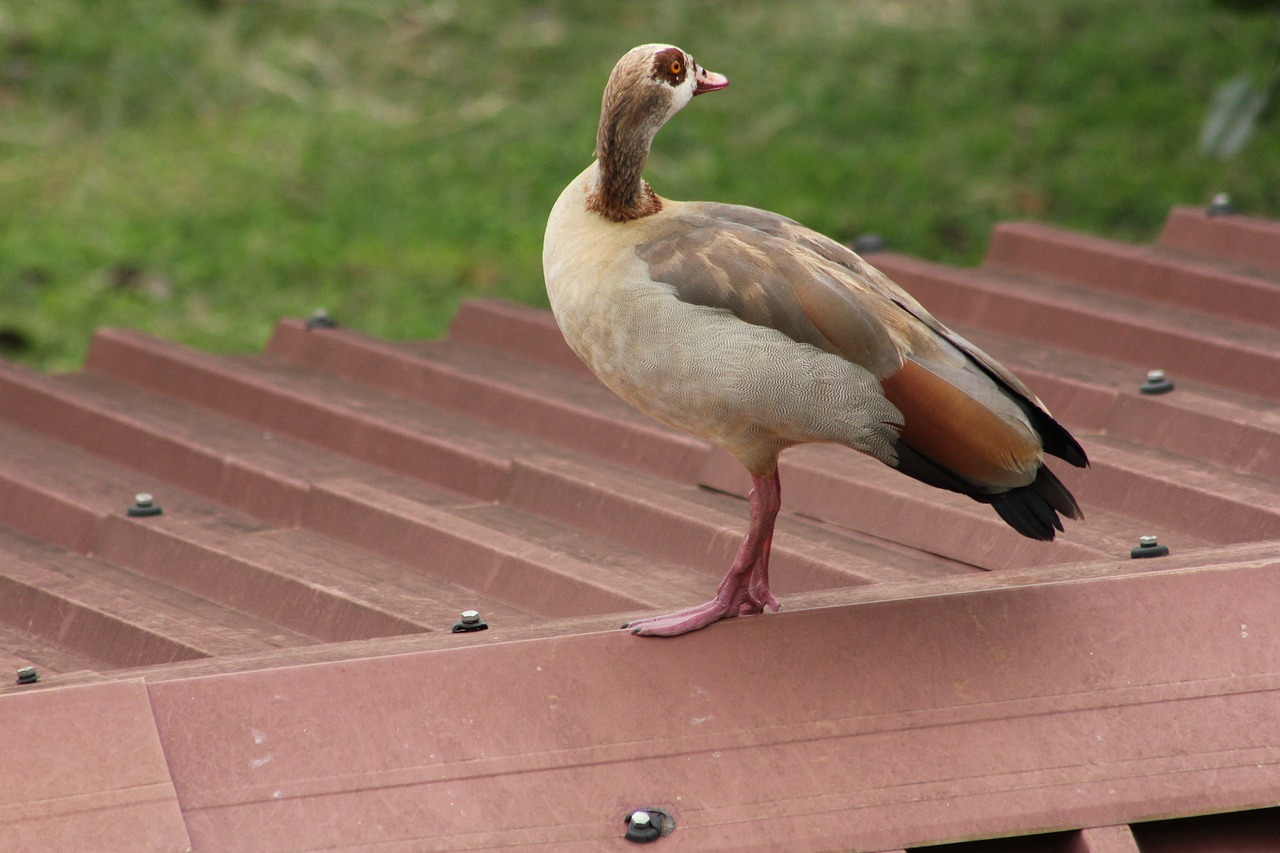 Recreational Activities and Attractions
Recreational Activities and Attractions
Nairobi National Park offers a wide range of recreational activities and attractions, including:
– Picnic sites with charming views of the surrounding countryside
– A boardwalk that leads to the hippo pool, where visitors can observe these fascinating creatures up close
– The ivory-burning site monument, a tribute to Kenya’s conservation efforts and a reminder of the importance of protecting wildlife
– The Kenya Wildlife Service’s Nairobi Safari Walk and Animal Orphanage, where visitors can learn about conservation efforts and see animals up close
– The David Sheldrick Wildlife Trust orphanage, where visitors can see baby elephants and learn about conservation efforts
– Giraffe Manor and the Karen Blixen Museum, which offer a luxurious and historical experience just a short drive from the park
Why Visit Nairobi National Park?
Nairobi National Park is a unique and fascinating destination that offers something for everyone. Whether you’re a wildlife enthusiast, a nature lover, or simply looking for a unique and exciting experience, the park is a must-visit destination. Here are just a few reasons why:
– Unique combination of modern city and wild nature: Nairobi National Park is one of the only national parks in the world that is located within a capital city, making it a unique and fascinating destination.
– Diverse range of wildlife and landscapes: The Park is home to a wide range of wildlife and landscapes, including grasslands, woodlands, rivers, and lakes.
– Recreational activities and attractions: The Park offer a wide range of recreational activities and attractions, including picnic sites, a boardwalk, and a museum.
– Convenient location: The Park is located just a few kilometers from Nairobi’s city center, making it easy to visit and explore.
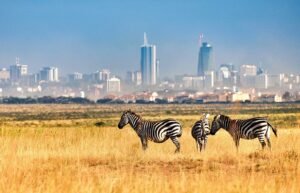
Nairobi National Park
Best Time to Plan Your Visit
The best time to visit Nairobi National Park is during the dry season, which typically takes place from December to February and June to October. During this time, the wildlife is more concentrated around the park’s water sources, making it easier to spot the park’s amazing wildlife.
The park’s small dams, which were built along the Mbagathi River, attract water-dependent herbivores during the dry season, creating a spectacle that is not to be missed. The dry season is also the best time to see the park’s migratory wildlife, including the wildebeest and zebras.
Nairobi National Park is open year-round, but the best time to visit is during the dry season, from June to October. During this time, the weather is dry and sunny, and the wildlife is more concentrated around the park’s water sources. Here are a few tips to help you plan your visit:
– Safari drives and guided tours: The Park offers safari drives and guided tours, which can be booked through the Kenya Wildlife Service or a private tour operator.
– Accommodation options: The Park offers a range of accommodation options, from budget-friendly campsites to luxury lodges.
– Transportation: The Park is located just a few kilometers from Nairobi’s city center, and can be reached by car or taxi.
The David Sheldrick Trust Sanctuary
Located near the park’s main entrance, the David Sheldrick Trust Sanctuary is a must-visit destination for anyone who is interested in conservation and wildlife. The sanctuary takes care of orphaned elephant and rhinoceros calves, and releases them back into secure sanctuaries after a certain period of time.
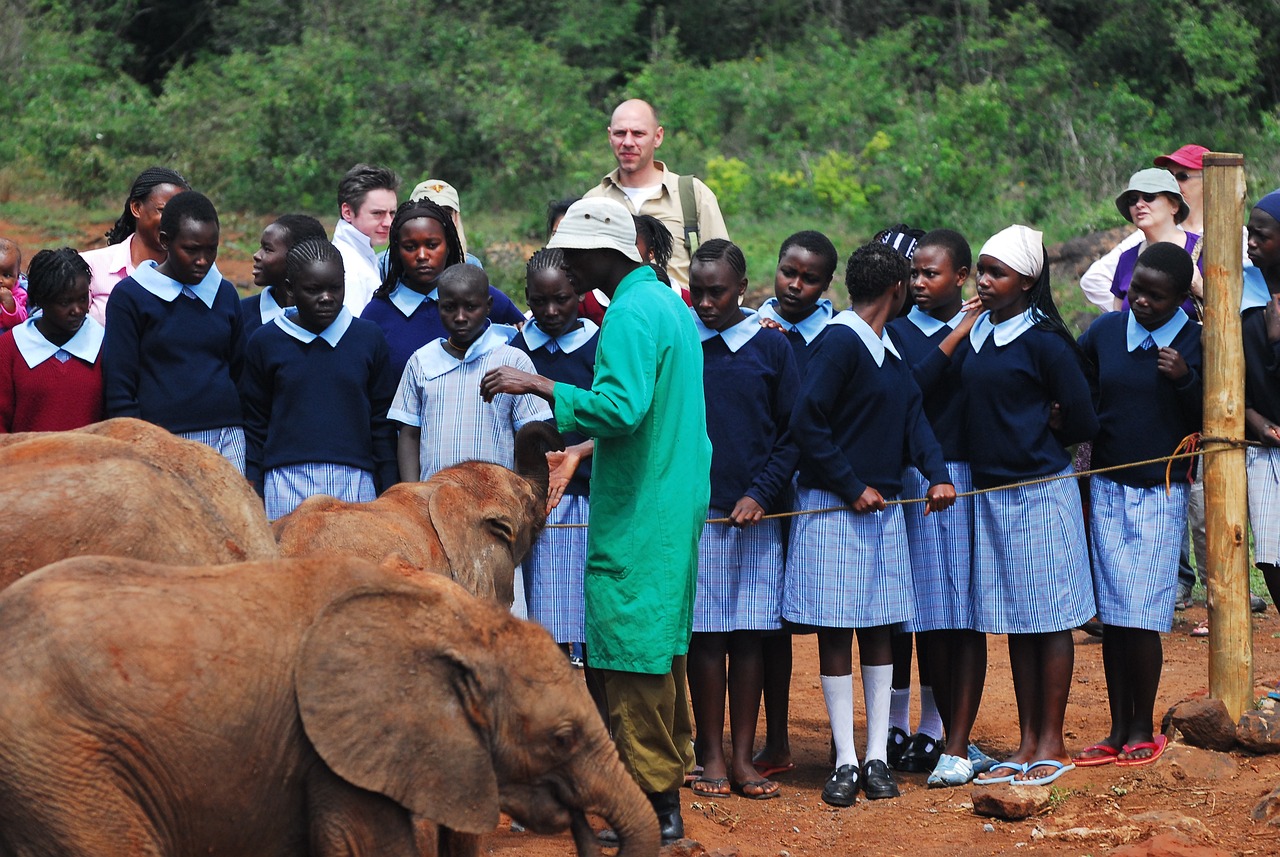 The sanctuary is an important part of the park’s conservation efforts, and it provides a safe and nurturing environment for the park’s orphaned wildlife. Visitors to the sanctuary can learn about the park’s conservation efforts and see the orphaned wildlife up close.
The sanctuary is an important part of the park’s conservation efforts, and it provides a safe and nurturing environment for the park’s orphaned wildlife. Visitors to the sanctuary can learn about the park’s conservation efforts and see the orphaned wildlife up close.
Nairobi National Park is a unique and fascinating destination that offers a chance to see wildlife in their natural habitat. The park’s proximity to Nairobi’s city center makes it an ideal destination for those who want to experience the thrill of a safari without having to travel far from the comforts of urban life. With its diverse wildlife population, spectacular wildebeest and zebra migration, and important conservation efforts, Nairobi National Park is a must-visit destination for anyone who is interested.
Kenya Safari Holidays | Kenya Tour Packages
[/vc_column_text]
12 Days Kenya Classic Safari brings you the magical experience ever. Visiting all the classic safari attractions, it is the best adventurous tour that one can ever have. Visit the parks. Read More
10 Days Kenya Wildlife Safari, start your trip from Nairobi and end it in Nairobi. Explore Amboseli, Aberdares, Nakuru, and Maasai Mara with a lot of dazzling wildlife. Read More
8 Days Best of Kenya Wildlife tour, explore the Great Rift Valley -Samburu reserve & Maasai Mara national reserve. Passing through the rolling savannah grassland to the Great Rift Valley. Read More
Enjoy your 6 Days Kenya Wildlife Safari with one of the best points for bird lovers – Lake Nakuru National Park. Read More
4 Days Kenya Wildlife Safari in Amboseli National Park is an exclusive and amazing journey that passes through the open plains and landscapes. Read More
4 Days Flying Maasai Mara Safari is a tiresome – less safari that gives you the best experience ever around Kenya. Take 2 full days doing the game drives in the park. Read More
3 Days Kenya Safari brings the typical Kenyan adventure closer to your eyes. Explore Nairobi’s city with the catching infrastructure with the insights of the wildlife in the park. Read More
